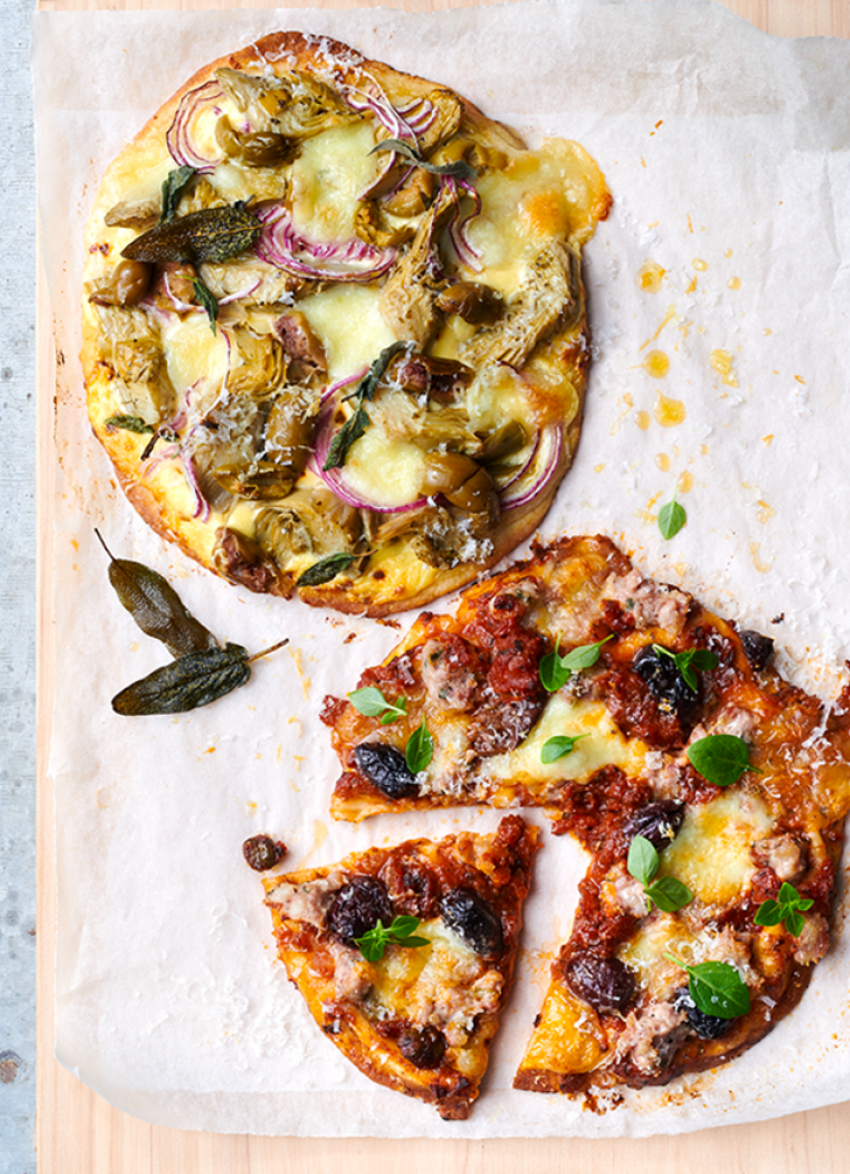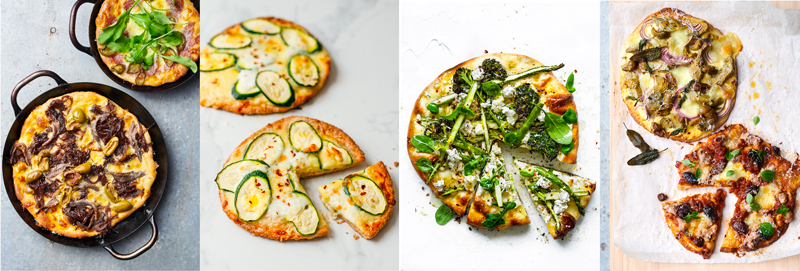11 Iconic Styles of Pizza from Around the World

With as many variations on the classic as there are potential toppings, pizza looks very different from one corner of the globe to the next. So today, on International Pizza and Beer Day, we investigated what some of those variations look like.
Though the making of flat bread with toppings on it began not long after humans developed agriculture, it was around 997 AD, in a latin text from what is now Central Italy that the first known use of the word Pizza appeared. 1023 years later, you'd be hard-pressed to find a person who doesn't say it (and eat it) all the time. With that ubiquity comes variance - and even within the United States of America, a Chicagoan pizza looks very different from a New York pizza.
Napoli
Fired in a very, very hot wood oven for often as little as 90 seconds to get that dry, puffy, leopard spotted bread then topped with not much more than tomatoes, mozzarella and basil, the neapolitan style of pizza is well-appreciated worldwide. The distinctive red, green and white pizza was originally made in Port Alba, Naples by Raffaele Esposito in 1889 to honour the visit of King Umberto and Queen Margherita of Italy, hence the Neapolitan pizza's name, the Margherita pizza. If you're in Auckland, Umu in Kingsland make a great one, and in Napier, Vinci's pizza is pretty close too.
Rome
The roman style 'white pizza' or 'pizza bianca' is pizza without even the most basic of sauce or cheese toppings - instead, the flat, round bread is baked with fresh olive oil and coarse salt and maybe topped with herbs. If you're an olive oil connoisseur, this is an excellent way to enjoy it.
Sicily
Sicily's signature style of pizza, 'sfincione', is square or rectangular, and for topping, gets a simple treatment of olive oil, a sprinkle of cheese and some breadcrumbs. An American version of the sfincione has more cheese, a thicker crust and a splash of tomato sauce.
New York
When America's first ever pizzeria, Lombardi's opened in New York's 'Little Italy' in 1905, it set the style that New York pizzas have been made in to this day. New York pizza is hand-tossed to acheive a very thin base which is then woodfired to a crisp with tomato sauce, mozzarella and thinly sliced pepperoni - a cousin of the Neopolitan pizza.
Chicago
Deep-dish pizza is synonymous with Chicago: thick crusted and stacked in (surprise, surprise) a deep dish with multiple layers of (usually) chunky tomato sauce, cheese and pepperoni. For pizzas with the same toppings, the Chicago and New York styles couldn't be more different from eachother.
St. Louis, Missouri
Because the St. Louis pizza is as thin as can be and topped with three cheeses, it's little wonder that it's mocked as being 'cheese on a cracker' by people from outside St. Louis. It's made without yeast and the three cheeses are really one cheese: provel, which is a blend of cheddar, provelone and swiss cheese. Other toppings can be added too, in fact the thin and crispy base is so hard, you can stack it high with toppings, but you wont be able to fold it.
Turkey and Armenia
Lahmacun, also known as lahmajoun, is the Turkic people's answer to pizza - sort of. It's of Middle Eastern origin (and is similar to sfiha), rather than European, so it's only been referred to as 'pizza' in modern times, by virtue of it being a flat bread topped with minced meat (usually beef or lamb) and vegetables (often onion, tomatoes and eggplant) and seasoned with cayenne pepper, cumin, paprika and cinnamon. Lahmacun is unusual in this list of pizza and foods that resemble it in that it isn't usually topped with cheese.
Lebanon and Syria
Though the Middle Eastern 'sfiha' was invented independently of pizza, similar dishes having been made in the Middle East since prehistoric times, it deserves a place on this list for being a curiously similar parallel invention. They are flat bread cooked with minced meat and thinly sliced onion, tomato, pine nuts and spices on top. Like pizza, there are many iterations, the mix of spices varying from household to household, but cinnamon, sumac and pomegranate molasses are common. Brazil have adopted the dish too, and their version, known as the esfiha is served as a fast food, often folded into a triangle.
Hungary
Lángos, like lahmacun, was around way before anyone thought to apply the Italian word 'pizza' to it - it had a part in both Byzantine and Ottoman Empire diets, and was introduced to Hungary when the country was occupied by Turkey in ancient times. It's is now often called Hungarian pizza because it is flat bread with toppings but the fried yeast-leavened bread made with mashed potatoes and flour topped with sour cream or yoghurt then cheese, garlic and butter sounds like a whole new kind of delicious.
France and Germany
The French for Tarte flambée literally translates to flamed tart or from the German flammkuchen to flame cake - and what a gift to the world this Alsatian dish is, even if the translations are a little far off the truth, which is that the tart is traditionally not flambéed, but rather cooked in a wood-fire oven. It is traditionally made with thinly slided onion and lardons as well as white cheese or crème fraîche.
Spain
We like Spain's idea of creating pizza, or as they call it, coca, with a thin flaky pastry base and a liberal application of oilve oil. The coca, most popular in Catalonia, can be savoury or sweet, with a closed or open top and common toppings include tomatoes, mushrooms, olives, anchovies, pine nuts and citrus rind.
Click here to see dish's contributions to the world of pizza
latest issue:
Issue #120
As the days become shorter, and the nights cooler, the latest issue is perfectly timed to deliver delicious autumn dishes. From recipes using fresh seasonal produce such as feijoas and apples, to spectacular soothing soups and super-quick after-work meals in our Food Fast section, we’ve got you covered. With Easter on the horizon, we feature recipes that will see you through breakfast, lunch and dinner over a leisurely weekend holiday, and whip up chocolatey baking treats sure to please. We round up delicious dinners for two and showcase a hot new Korean cookbook before heading south to Dunedin to check out all that’s new in food and dining.The latest issue of dish is on sale NOW at all good bookstores and supermarkets – don’t miss it!

